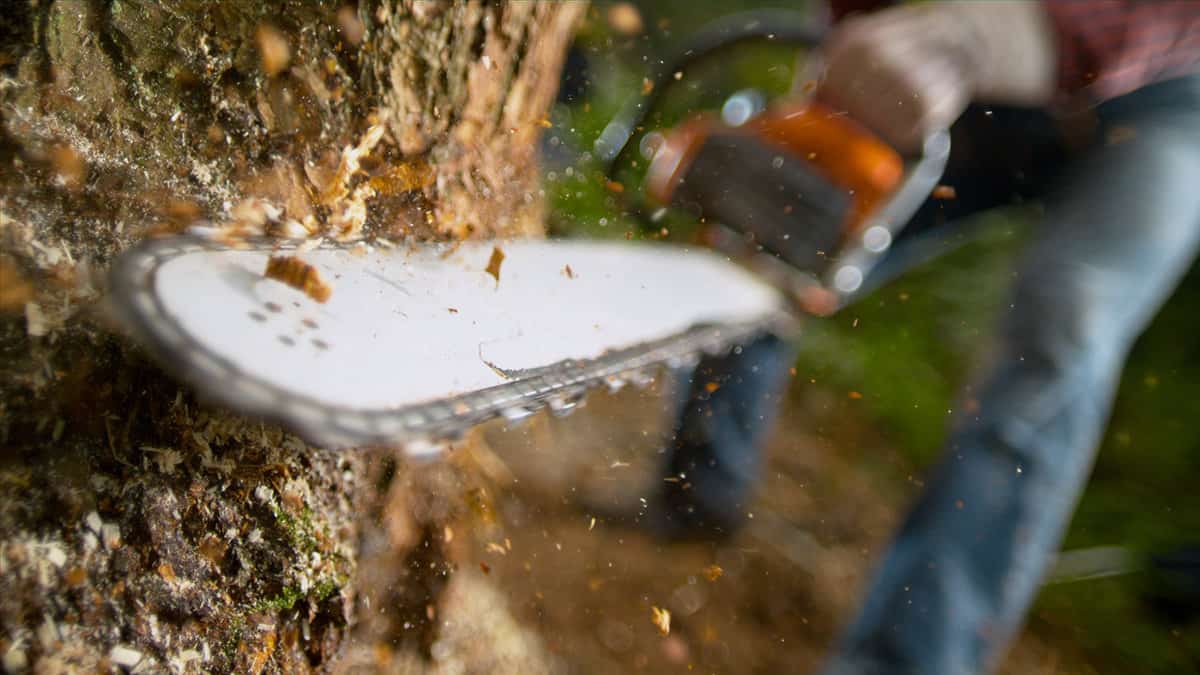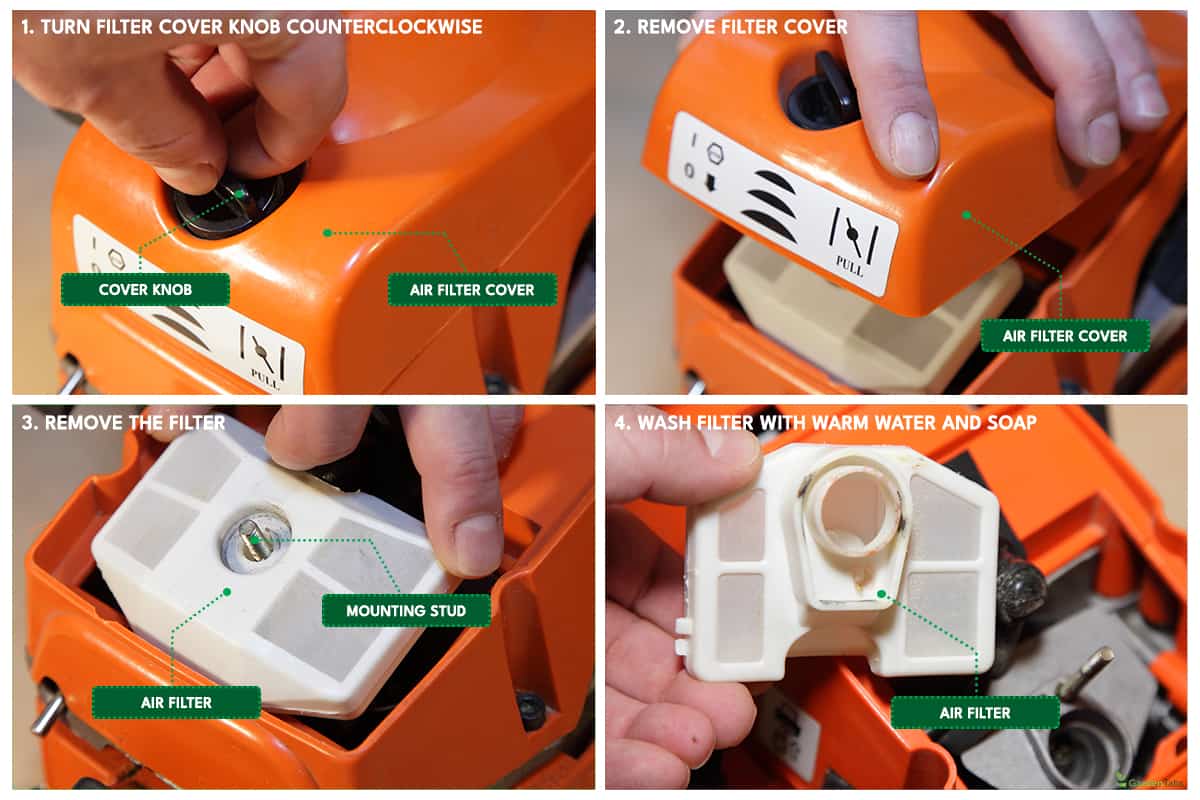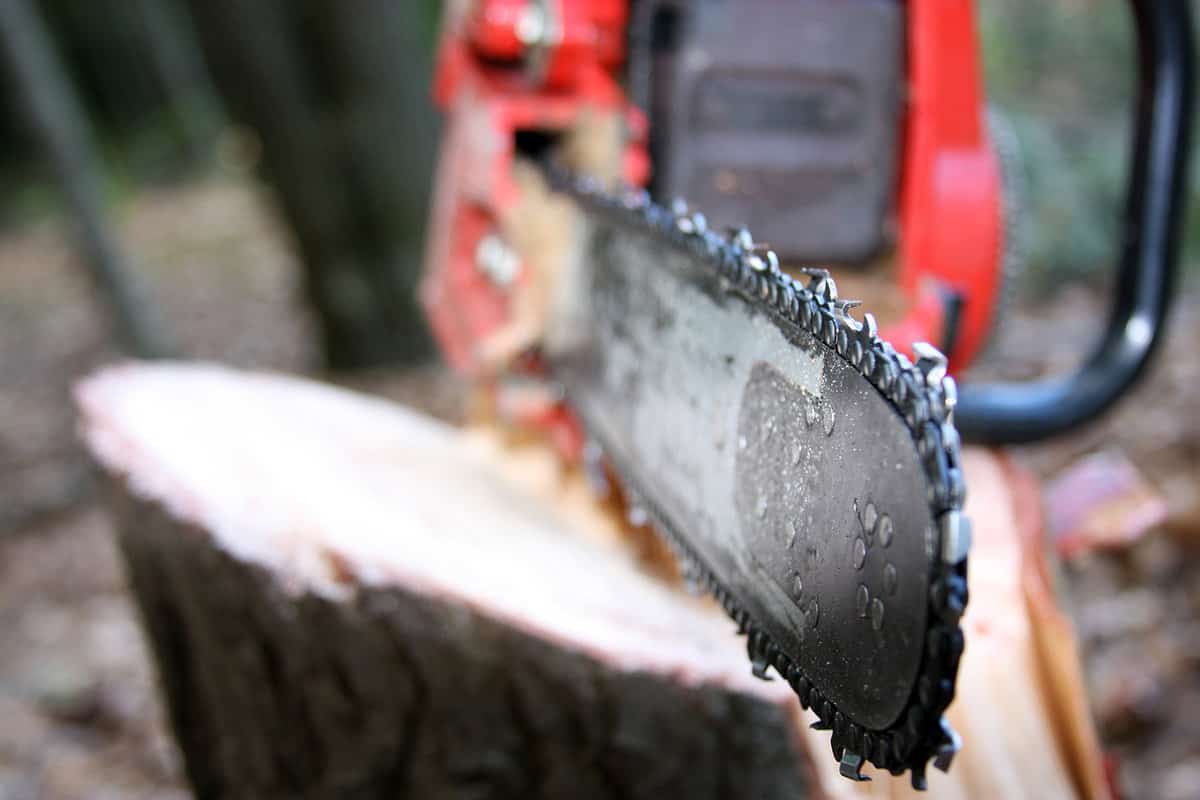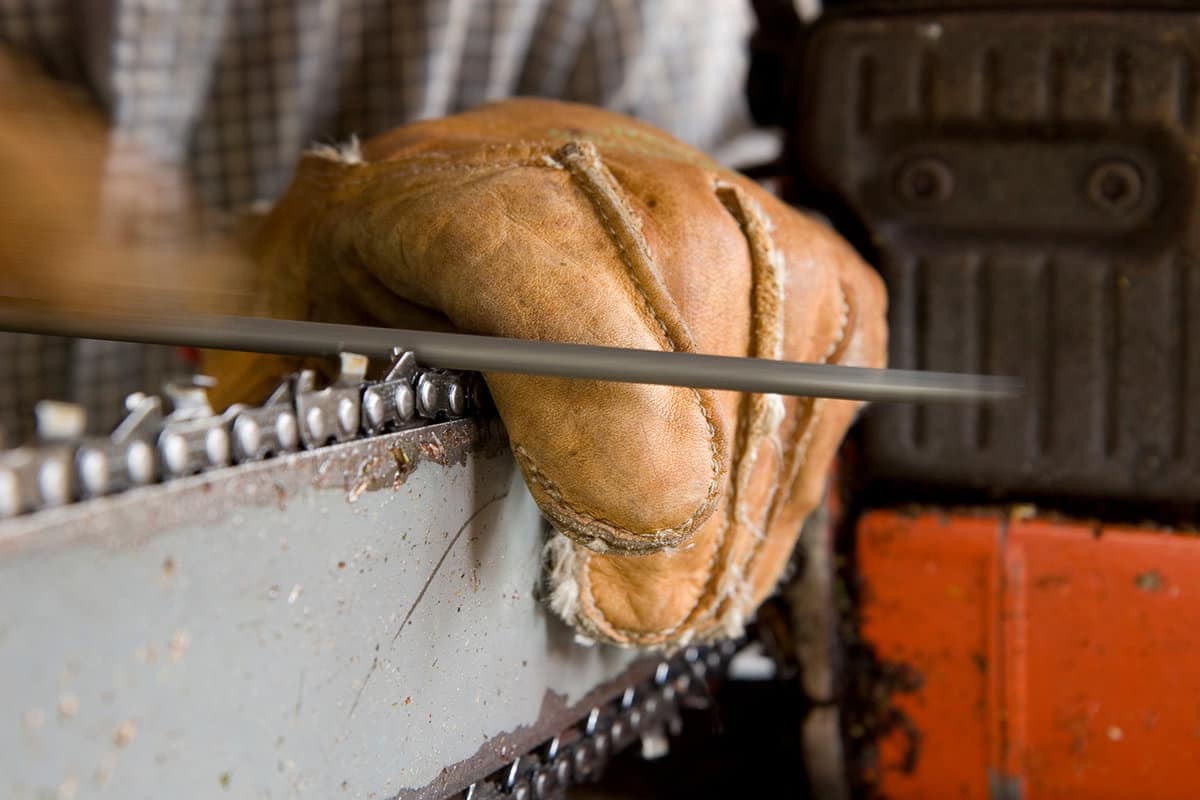Would you like to know if you should run a chainsaw at full throttle? Well, we have researched this topic and have answers for you. It's vital to understand whether running a chainsaw at full throttle is okay to ensure you are getting the best performance.
It is best to run a chainsaw at full throttle. Chainsaws use two-stroke engines that were designed to be run on full throttle. To get the best performance out of your chainsaw, always make cuts at full throttle.
This article will teach you if you should run a chainsaw at full throttle. We will also discuss the answers to other interesting related questions, such as why does my chainsaw slow down at full throttle, and why does my chainsaw chain dull fast? Keep reading to learn more.
Should You Run A Chainsaw At Full Throttle?
Chainsaws make use of two-stroke engines which were designed to run at full throttle. A two-stroke engine handles running at full auto by taking fuel with a mix of oil. The oil helps to keep the engine from overheating.
Since these engines are designed to be run at full throttle, running them slower can cause damage. The damage caused by not running the engine at full throttle can cause the chainsaw to die while cutting.
The damage is so severe because when you run a chainsaw at a slower speed, you have to push harder to get the chain to cut. This can put extra stress on the engine's internal components, wearing them out faster. It's best always to use a chainsaw at full throttle.
Why Does My Chainsaw Slow Down At Full Throttle?

Your chainsaw may slow down at full throttle because it isn't getting enough air to burn all the fuel. For fuel to ignite, it needs a spark and oxygen. If the air filter is clogged, then the chainsaw won't be able to handle full throttle.
The solution is to clean your air filter. Once the air filter is clean and more oxygen can reach the engine, it will be able to handle full throttle.
How To Clean A Chainsaw's Air Filter

To clean a chainsaw's air filter, first, remove it from the chainsaw. The filter is under a plastic guard held on by a bolt. Remove the bolt to gain access to the air filter.
Take the air filter out of its casing to clean it. The air filter will have a combination of grease and sawdust that can be tricky to remove with a brush alone.
Take the air filter and run it under some warm water. Take some soap and apply a few drops to the filter. Now take a scrub brush and gently brush away the debris. Once the filter is clean, you will need to let it fully dry.
Once the filter dries, reinsert it into its plastic case, and reinsert it into the chainsaw. Replace the plastic guard, and secure it with the bolt you removed earlier. Now your chainsaw will be ready to cut.
Why Does My Chainsaw Chain Dull Fast?

There are a couple of reasons your chainsaw chain may dull fast. Your chainsaw chain could be dulling fast because you are using the wrong file or are pressing too hard when you sharpen your chain. Let's look at each of these possibilities and learn how to tell which is the cause and how to remedy it.
Wrong File Size
To find out if you are using the wrong size file to sharpen your chainsaw, look at its owner's manual. If you are using the wrong file, you will need to switch to the correct size since it can cause your chain to get dull quickly.
Pressing Too Hard
The other reason your chainsaw chain may dull fast is that you are pressing too hard when you sharpen it. Pushing hard makes the cutting edge thin, which can cause it to become dull fast. It's best to press more lightly to ensure the longer-lasting cutting edge.
How To Sharpen A Chainsaw's Chain

To sharpen a chainsaw's chain, start with a file with the correct diameter. If you have a 1/4-inch chain pitch, you will need a file with a 4-millimeter diameter. A chain with a 3/8-inch chain pitch will need a file with a 5.2-millimeter diameter.
Take the file and line it up with the angled guidelines on the teeth to ensure the correct angle. Pull the file across the tooth several times until it has the same bite as the shortest tooth.
Next, do the same for the next tooth, working your way around the chain. It's vital to look at the guild lines since every other tooth alternates the cutting angle.
Once you have worked your way around the chain and ensured that all the teeth have the same length bite, you are finished sharpening your chainsaw's chain.
Why Can't I Start My Chainsaw When It's Cold?
The reason it's challenging to start a chainsaw when it's cold is that the oil in the engine can thicken and create clogs. The solution is to get the engine warmer and get the oil flowing. The engine can be heated by starting it and letting it run a bit.
Since you need to warm a chainsaw to start it and heat it by starting it, it can be challenging to get a chainsaw started in the cold without the proper technique.
How To Start A Chainsaw When It's Cold

To start a chainsaw when it's cold, you need to get the engine to turn over a few times. Every time the engine completes a combustion cycle, it gets warmer and decreases the viscosity of the oil in the engine.
Start by setting your chainsaw to choke. When your chainsaw is set to choke, more fuel is allowed in the combustion chamber, making starting the engine easier. A chainsaw can't stay running on choke, however, because there is too much fuel to sustain combustion.
Instead, the extra fuel primes the engine to roll over a few times once you switch off the choke. So pull the cord a few times with the engine on choke, and then switch off choke and pull the string. The chainsaw's engine should roll over a few times and stop.
It stops because the oil was still too thick. Keep cycling the choke on and off, pulling the cord three times while on choke and once when it's off. Each time you complete a cycle and the engine rolls over, the oil gets less viscous, and eventually, the engine will stay running.
If it is freezing, you may not be able to get the engine to turn over with choke alone. The solution uses a stronger combustible than the fuel in the gas tank. Use a can of ether starting fluid to help the engine roll over and heat up.
Using Ether Starting Fluid
Instead of setting the engine to choke, remove the cover over the air filter and spray a quick spray directly onto the air filter. Now pull the cord to start your chainsaw. The engine should turn over a few times despite the cold.
If the engine stalls after a moment, spray some more ether on the air filter and pull the cord again. Each time you use the ether starting fluid to turn the engine over, it will warm, and its internal oil will begin flowing. Eventually, the engine will start and stay on by itself.
If you spray too much ether, it's possible to flood the engine. If this happens, the engine won't start until some of the ether evaporates. Ether evaporates very quickly, so you will only need to wait five to 10 minutes to try and start the engine again.
If you want to try some ether starting fluid yourself, here are two of the best available on Amazon.
Sta-Bil Starting Fluid
You can find this product here on Amazon.
Penray High Ether Starting Fluid
You can find this product here on Amazon.
Final Thoughts
In this article, we learned that two-stroke engines are made to be run at full throttle, and running them slower than that can damage their internal parts. We also learned that your chainsaw might be slowing down at full throttle because its air filter needs to be cleaned.
Remember, if it's too cold to start your chainsaw manually, you can try ether starting fluid to start it in the coldest environments.
We hope you enjoyed this article. If you want to learn more, check out some of these other posts:


